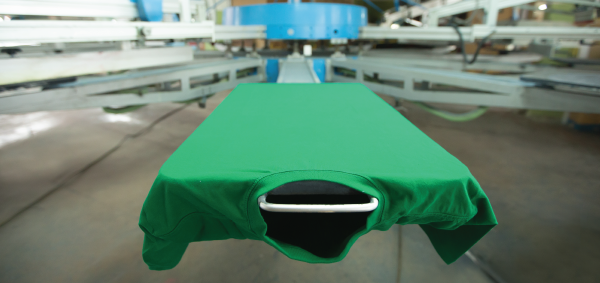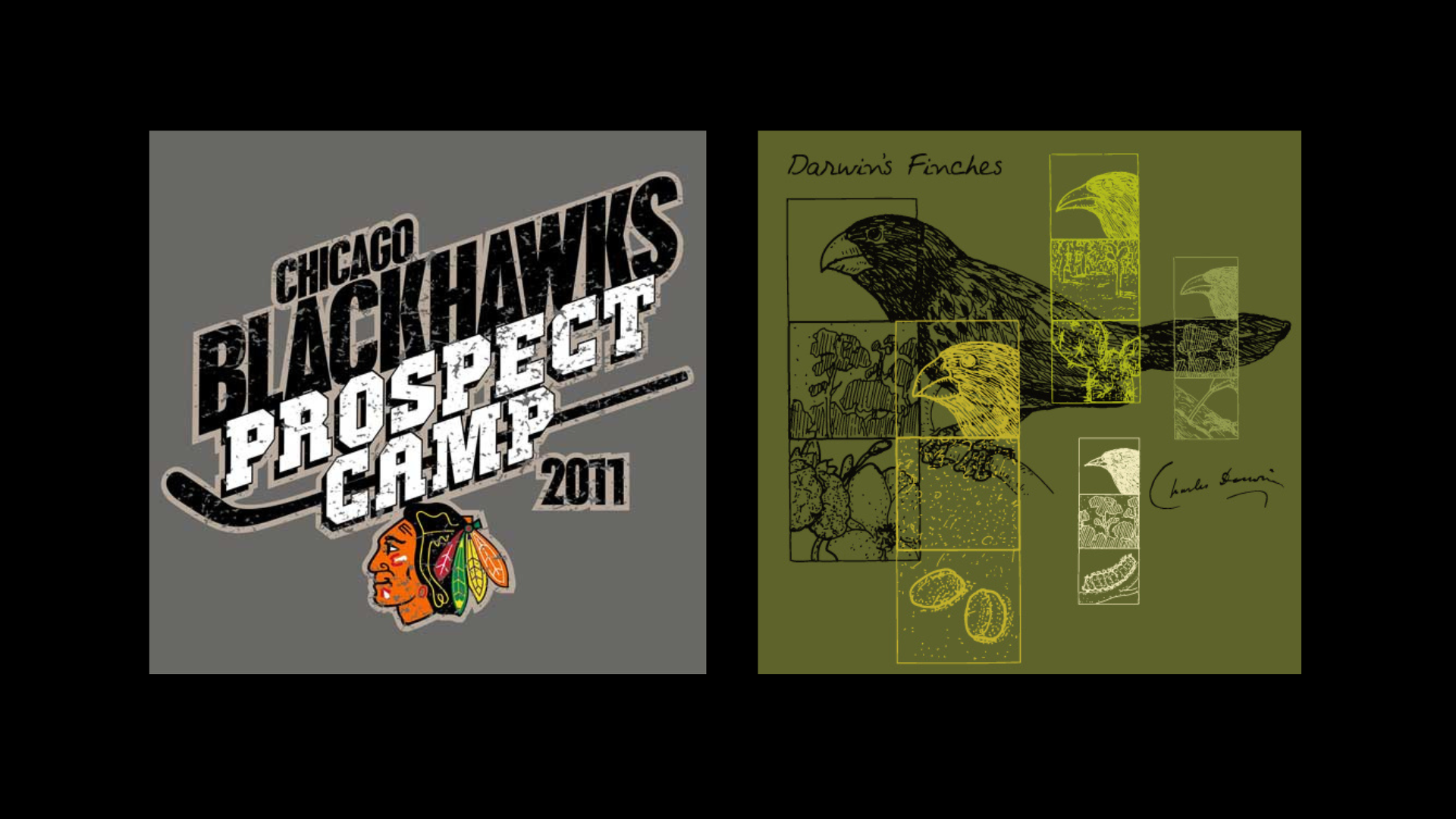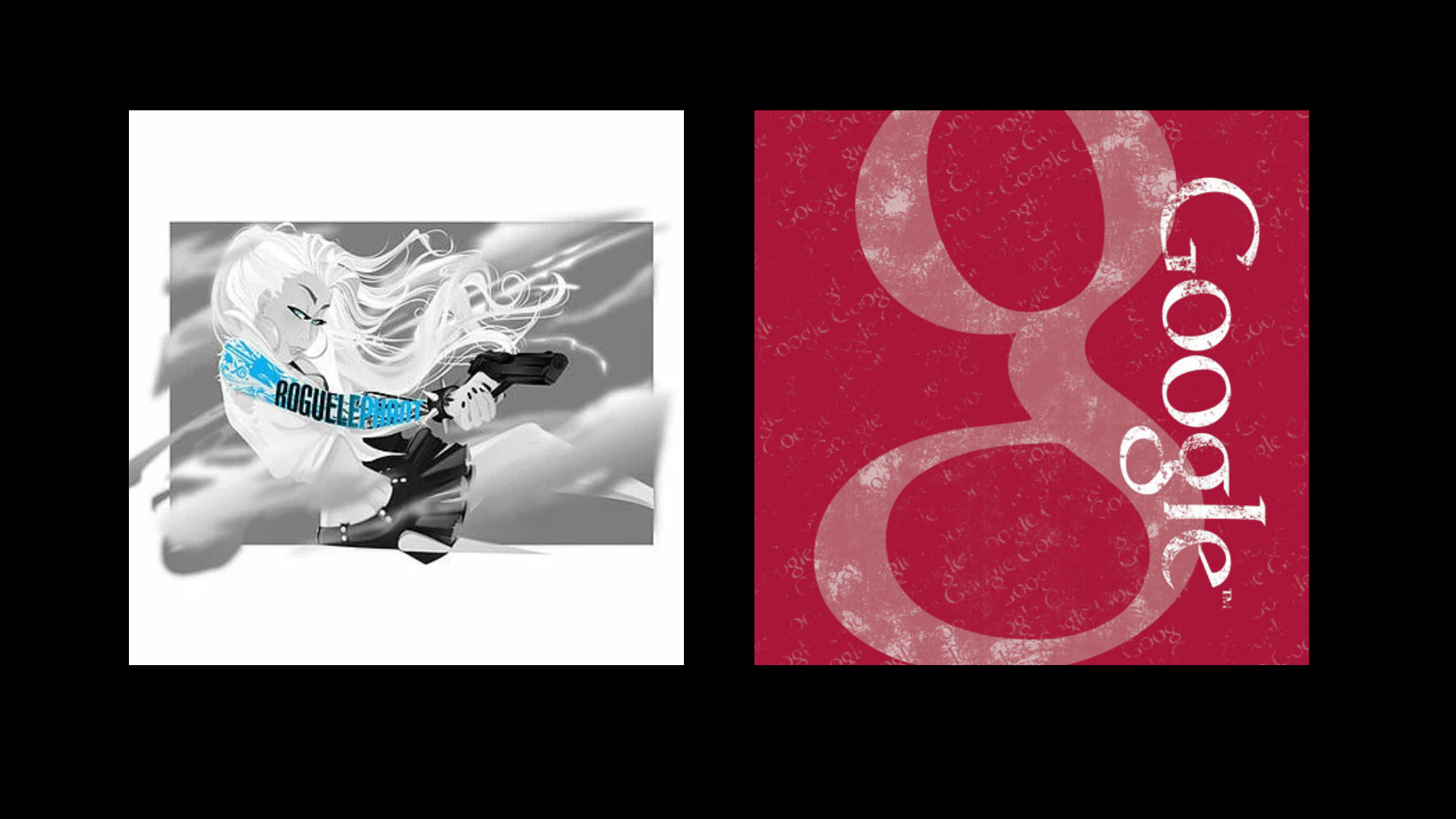We can also scan drawings, already printed tees or other flat images you bring in depending on the design and desired print quality. If your art files do not meet these guidelines, never fear!
Chances are we can use whatever files or ideas you do have to bring your screen print design to life. Just ask your customer service rep about costs involved with design creation or art re-drawing.
Art Requirements
What kind of art is good for use in Screen Printing?
There are two industry standard programs used for creating graphics for screen print - Adobe Illustrator and Adobe Photoshop. Please see below for art submission guidelines.
We can also scan drawings, already printed tees or other flat images you bring in depending on the design and desired print quality.

Adobe Illustrator
- Vector Graphic Images - shapes created using paths instead of pixels
- All fonts should be converted to outlines
- Embed any linked files, but also provide the support file separately
- Illustrator can also create very complex vector images that may end up being separated in Photoshop
Adobe Photoshop
- Raster Images - design elements created using pixels instead of paths
- Best for very complex graphics or photographic images
- Images be created at a minimum of 150 dpi at print size
- Up-sampling web images does not make the graphic use-able for screen print
Color Separation
In order to screen print a design on a t-shirt or other garment, the design must be broken down to the individual color components. The process of isolating each color is called color separation. There may a fee associated with color separation depending on the art file and design.
There are various terms we use to describe the complexity and technical process involved in color separation for a particular design.
Four Color Process
This process mimics an ink jet printer in that cyan, magenta, yellow and black are used for the printing. Color separation using 4 color process is rarely, if ever, used in our shop these days. The print quality and saturation is far superior when we use complex spot color or simulated process. Four color process can only be used when printing on white garments. Direct-To-Garment printing may be a better option than 4CP depending on the desired result. Be sure to consult with a sales rep before ording 4CP.
# OF COLORS: 4
Simulated Process
We use simulated process separation on the most complex and/or photorealistic designs. Pantone ink colors using varying halftone percentages are layered to simulate additional ink colors. Blending is enhanced by using wet-on-wet print techniques.
# OF COLORS: 8-12


Big thanks to Ian Leino and Threadless for
the simulated print. This t-shirt is hot!
Thanks to Oxen and Threadless for this
purrrrfect example of simulated process.
Three Keyboard Cat Moon!

Spot Color
When a design has very basic, solid color fills that are easy to identify, we refer to the separation type as spot color.
# OF COLORS: Up to 12 depending on garment type and color, and order quantity.

Spot Color With Halftone
This is the next level of difficulty beyond spot color. Designs are simple and utilize halftone shading and/or gradients in limited areas. No complex gradients.
# OF COLORS: Up to 12 depending on garment type and color, and order quantity.
.png?width=1920&height=1080&name=Spot%20Color%20With%20Halftone%20(1).png)
Complex Spot Color
These images are more illustrative or painterly, not photorealistic, but incorporate many colors in a complex design. Complex spot color separations are used when designs incorporate 3-D effects, transparency, layering, complex gradients, and other effects along those lines.
# OF COLORS: 5-12
Top Screen Printing Articles
Choosing The Right Type Of Screen Printing For Your T-Shirts Published
5 Pantone Colors To Avoid On Screen Printed T-shirts Published
4 FAQs About Using A White Under Base when Screen Printing Published
What You Need to Know About Screen Printing on Tri-Blend Shirts Published
From Concept To Screen Printed T-shirt: A Six Step Process
The Unwanted Mark of Screen Printing
5 Tips When Preparing Your Illustrator File for a Screen Printer
Pantone & Textile Screen Printing
Pantone colors are the universal language for communicating specific colors right down to the shade. This language overcomes distances and computer monitors with different calibrations.
This guide is meant to give you an understanding of how screen printing inks relate to Pantone® colors. Fill out the form to the right and download your free guide today!
